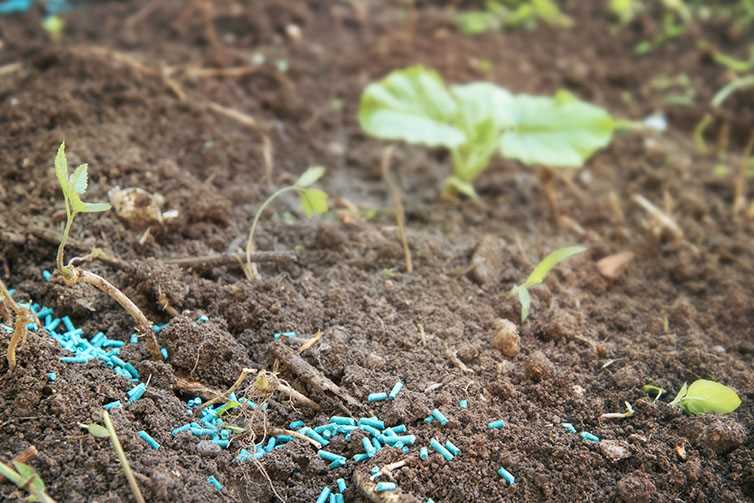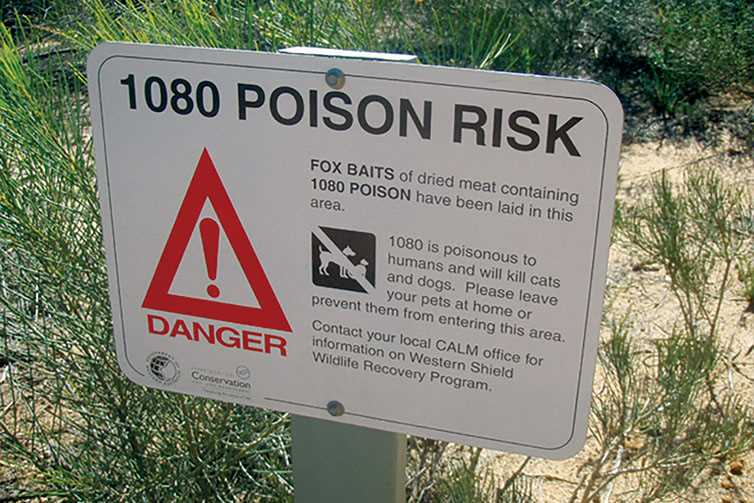EnviroMail 143 Australia - Poison Risk! Compound 1080 – Monofluoroacetic Acid
Monofluoroacetic acid (FAA) is the free acid form of sodium fluoroacetate which is more commonly known as compound “1080” finding application in agriculture and farming as a vertebrate poison.

Environmental Occurrence – Anthropogenic Sources & Regulation
Farmers and graziers use sodium fluoroacetate to protect pastures and crops from various herbivorous mammals, and other pest species such as foxes. Inevitably, it is also highly toxic to mammals including humans. In New Zealand and Australia, it has been employed to control invasive non-native mammals that prey on or compete with native wildlife and vegetation since the 1950s.
Due to the nature of fluoroacetate as a vertebrate poison, water utilities managing catchments where baits have been laid may consider it incumbent to monitor for the presence of this compound. This could be especially true after periods of heavy rainfall, due to its solubility, and the prospect that it will find its way into local waterways.

Fig 1: A notification on the dangers of 1080 when applied to land as a vertebrate poison.
In January 2008, the Australian Pesticides and Veterinary Medicines Authority (APVMA) reviewed the use of Monofluoroacetic acid as compound 1080, finding that:
“… Poisoning of non-target animals does occur with 1080 baiting. However, it concluded that when appropriate attention is paid to bait density, placement, timing, substrate and other matters, impacts can be localised or limited to individual animals and thus do not appear to result in significant adverse effects on non-target animals at the population level.
Careful attention to the selection of bait material, the amount of 1080 in each bait, timing and placement of baits combined with preliminary free feeding can increase the acceptance of poisoned baits by target animals. The review added several new instructions to the container labels to better protect the environment and non-target animals. The review also reduced the bait rate to 10/km transects for aerial baiting of wild dogs.”
Environmental Occurrence – Natural Sources
Sodium fluoroacetate is also a naturally occurring poison found in at least 40 plants native in southern countries of Africa, in Australia, and South America. Sudden deaths of livestock in Brazil and South Africa have been linked to the consumption of such plants.
Environmental Fate & Exposure
Based on degradation studies using New Zealand streamwater samples, biodegradation may proceed slowly in the aquatic environment and is temperature dependent. Occupational exposure to sodium fluoroacetate may occur through dermal contact with this compound at workplaces where sodium fluoroacetate is produced or used.
Chemical Characteristics
The pKa of sodium fluoroacetate is 2.72, indicating that this compound will exist almost entirely in the anion form in environmental waters at pH values of 5 to 9. Hence volatilization is not expected under normal conditions.

Figure 2: Chemical Structures of Monofluoroacetic Acid as the neutral acid; and sodium salt
ALS Service Offering
ALS has validated monofluoroacetic acid in water matrices to an LOR of 5 μg/L, reporting as the protonated acid, using an LCMSMS technique. The ALS method (code EP267) has been adapted from methods:
- Analytical Methods. 2018 December 14; 10(46): 5455– 5590: “Direct aqueous injection of the fluoroacetate anion in potable water for analysis by liquid chromatography tandem mass-spectrometry”
- Food Additives & Contaminants: Part A, 2015, Vol. 32, No. 11, 1885–1892: “Quantitative determination of sodium monofluoroacetate “1080” in infant formulas and dairy products by isotope dilution LC-MS/MS”
Water samples should be collected in unpreserved glass or HDPE bottles, kept chilled and analysed within 7 days.
| Compounds | CAS No | LOR (μg/L) |
| Fluoroacetic acid | 144-49-0 | 5 |
Monofluoroacetic acid analysis may complement analysis of Total Organic Fluorine (TOF) by ALS methods EP040 and EP040-LL where TOF is intended as a proxy for gross PFAS estimation. Monofluoroacetic acid is not a species of PFAS and if its presence is anticipated in samples, analysis by EP267 may help to rule out contributions to estimated PFAS concentrations from monofluoroacetic acid.
For further information please contact your ALS Account Manager or contact ALS via the details below:
Ph: 02 8784 8555
Email: alsenviro.sydney@alsglobal.com























































